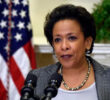Garifunas in the African Diaspora
Nodia Mena and Omar Ali / October 6, 2017We first met at a new faculty orientation. Nodia had recently moved into a full-time Spanish-language teaching position at The University of North Carolina at Greensboro and I serve as Dean of the Honors College at the university. Our connection was immediate given Nodia’s background as a Garifuna (a person of African and Native American descent from Central America) and my research on the history of the African Diaspora (Africans and their descendants across the world).
While most Garifunas (or Garinagu) live in Honduras, Belize, Guatemala, and Nicaragua, many live in the United States. Substantial numbers live in New York, Los Angeles, and New Orleans, with handfuls living across North Carolina. Nodia grew up in Honduras and came to North Carolina with her family via New York. Garinagu like Nodia are part of the state’s ever-growing, culturally-rich communities of origins from around the world.
Guilford County’s diversity can be measured by the linguistic range in its public school system, where more than 150 languages are spoken by students (including English, Spanish, Vietnamese, Arabic, French, Urdu, Hindi, Lao, Thai, Hausa, Somali, Chinese, and Nepali)—let alone speakers of various Montagnard peoples and the descendants of Lumbee among other Native Americans. We have long been a home to indigenous peoples, migrants, refugees, people on the move, and people looking to settle down.Among the languages spoken in the Piedmont is Karif—the Garifuna language spoken by more than 200,000 people in Central and North America. The language, and all the concepts and modes of thinking and being that a particular language includes, is part of the linguistic mix of young and older people from across the world enriching Greensboro, Guilford County, and North Carolina as a whole. Along with their language, they bring their culinary traditions, spiritual practices, artistic sensibilities, philosophies, and stories. Among the Garifunas in the state are the visual artist Isidra Sabio in Raleigh and truck driver Ricky Gotay in Winston-Salem. And, of course, there is Nodia, who in addition to teaching Spanish at UNCG is emerging as an ambassador of Garifuna culture.
Nodia dances punta, an expressive musical-dance form among the Garifuna. While there are varying styles within punta, the dances primarily consist of circular hip movements while holding one’s core upright—reminiscent of West African dances. Garifuna dancers move their feet to the sound of drums called garawon (pronounced ‘gara-uhn’). The drums are usually played by a group of four men, with two playing the lead, ‘la primera,’ and two playing a deep, steady beat, ‘la segunda,’ that sounds and feels like a heartbeat. Over these rhythms, women sing lyrical songs of love, yearning, desire, betrayal, hope, and fear—a spectrum of feelings, images, and experiences that have been transmitted orally and through dance from one generation to the next. As Nodia explains, over the centuries, Garifunas and their descendants have collectively and creatively built and rebuilt their culture from the memories of those who preceded them. For Garinagu, punta not only helps them to express their feelings, it is also a way for them to learn and grow.
Punta has always been an essential part of Nodia’s life. Every time she hears the music and every time she dances to it, she says she is transported to the warmest memories of her childhood—a magical time in her life. One of her favorite memories is dancing punta as a young child alongside her grandmother, mama. “I remember wearing a small red top and a wide flower-print skirt. It was ‘La feria de San Juan,’ [the San Juan festival], an annual event in ‘el barrio Cristales’ [the Cristales neighborhood],” she explains in Spanish. The festival gave everyone in town the opportunity to dress up and have a good time. “But while dancing as a child, I was oblivious to the history and significance of the event … What made me happy was the fact that I was with mama, and for reasons I did not understand, or even question, the ‘dun, dun’ of the drums took hold of my body and soul,” Nodia says with a big smile.
Growing up, punta was largely a source of joy for Nodia. However, once she began middle school and her body began to develop, becoming full-figured, the dance—which she performed in front of Garifuna and non-Garifuna alike—took on different connotations. As she remembers, non-Garifuna people began viewing her in a sexualized way. This made her uncomfortable, increasingly anxious, even scared while dancing punta. She began to fear non-Garifuna people coming from different communities who used to look at her as if she was “an exotic specimen created for the sole purpose of their entertainment.” She remembers, “It seemed as if all they expected of me was for me to shake my hips.” For some, her movements seemed to even provoke, as she put it, “the most ‘heretical’ visions in their minds.”
Nodia began to recoil emotionally. Her self-doubt increased when she realized there was not a single textbook that included information about the Garifuna. Teachers neither taught this history, nor was there any discussion of Garifuna culture as part of the national curriculum. Not even a mention. It was as if her heritage was not part of her country’s history or culture. “This disconnect was traumatic and it used to make me feel as if I was invisible, insignificant, and an outsider,” she remembers. “Being that I would never be valued beyond exoticism in the mind of the non-Garifuna majority, I was compelled,” Nodia says, “to pursue my education and go somewhere—anywhere—I could express my full humanity.”For many years, Nodia says she wondered whether mama ever felt the same way whenever she “joyfully, solemnly, or sensuously shook her gluteus maximus to the rhythm of the garawon!” If so, was dancing punta her coping mechanism? Unfortunately, mama is no longer with us and Nodia never had the opportunity to ask her. So, began her search to learn more about her people’s history.
The Garifuna grew their communities in St. Vincent as well as neighboring island Dominca during the seventeenth and early eighteenth century—and they did so in the face of European aggression and colonization efforts. At times, however, Garifuna collaborated with French forces, against their shared enemy, the British. But the British were determined to subdue the rebels. They invested heavily in their wars and launched one after another attack. Over the course of several decades, the Garifunas repelled British incursions.
Expression of the battles they waged come in the form of the yankunu, a war dance performed by Garifuna men to this day. The specific dance depicts the ways in which men and women repelled and launched their own attacks on the British, while also mocking European slave owners. In yankunu, Garifuna men perform in women’s dress, wearing skirts, with masks and feathered head-dresses—the latter signifying their indigenous origins—as well as cowry shells strapped above the knees for rhythmic effect. According to tradition Garifuna men disguised themselves as women hid arms under their dresses to get closer to British forces before attacking. For their part, enslaved Garifuna women on plantations hid male warriors, who attacked at night, when least suspected. In these ways, with drums beating and large sweeping movements by male dancers, yankunu is a reenactment of Garifuna’s history of resistance and rebellion.
It took a century of warfare against the Garifunas for the British to finally defeat them. Launching a major offensive in the second of two protracted wars against the Garifuna—whose labor and land were sought for plantation agriculture but whose existence served as a beacon of resistance—the British took control of Garifuna strongholds. Many Garifuna were sent to the deserted island of Baliceaux in 1763, where many perished over the subsequent generation. Still, Garifuna resistance continued. Their final political demise came in 1796 following the death of the great Garifuna leader, Satuye (Joseph Chatoyer). Survivors were expelled and went Honduras, among other places on the Central American Caribbean coast.
“I don’t know if mama, with a second-grade elementary school education, could have ever explained to me her most intimate thoughts about the harrowing experiences her ancestors endured,” Nodia reflects. “Yet, I witnessed how she lived a life based on a deep sense of community that Garifunas first developed over two centuries ago.” Cultivating a strong sense of community, Garifunas are grounded in their shared past: “The Garifuna international anthem, known as Yurumein,” Nodia explains, “means ‘our homeland.’” “The anthem speaks to our resiliency as part of our history,” she says. For instance, “it calls for the ‘leader to settle with the group at the first place where the sea connects with a river: Leimun shuluruty duna warubeite ñin ba bagurey bugura wabu.”
Whether at the “first place where the sea connects with a river,” up or down the coastline, or further inland, at Garifuna gatherings women dance punta, with call-and-response singing that recounts the time they journeyed from Saint Vincent to Honduras. “Now I understand why, for several years, mama allowed women to sharecrop at her farm in Mohaway [located in the northern part of Honduras]. I also understand why these women, and many others, gathered in my grandmother’s kitchen to make casabe, a flat bread made from yucca (a white root with brown skin used in the Caribbean and West Africa alike).” The bonds between Garifuna women is strong, as was their respect for mama. Indeed, several members went so far as to build mama’s kitchen in the collective spirit of Yurumein.
As Nodia notes, “even after 220 years we speak our own language, practice our own traditions, carry out our own rituals, cook our own types of food, and of course, continue to dance. We dance punta when we are happy and celebrate someone’s birth, and we dance punta in a sorrowful way when someone dies. As I have come to understand, punta is our coping mechanism—a way for Garifunas to remember and continue to connect with each other and our history.”
The Garifuna’s resistance to slavery, forced migration, cultural production, and resilience is part of a wider African diasporic experience that draws heavily upon dance, among other expressive, artistic forms, across the world: from the Siddis of Gujarat in India, the Kaffirs of Sirambiadiya in Sri Lanka, to the Afrodescendientes in the Barrio de Malambo in Peru, to African Americans right here in Greensboro, North Carolina.
Garifuna leaders continue to gather at annual events across Central and North America. Most recently, from August 14-16, several thousand Garifunas attended an international conference held in Municipio de Tornabe, Honduras, celebrating their cultures, discussing their histories, and connecting and reconnecting with family, friends, and colleagues from across the region. Among the kaleidoscope of people in attendance, foods offered, costumes on display, and music performed, was punta.
As a distant daughter of rebel West Africans and Native Americans, Nodia is well aware of the role she plays in educating the larger public about the Garifuna; for my part, and beyond my scholarship on the African Diaspora, as the son of a Peruvian and East Indian parents whose families also lived under Spanish and British colonial rule, I feel close to Nodia and our historical connections to our families’ respective pasts and to each other.
Nodia Mena, M.A., is Lecturer in the Department of Languages, Literatures, and Cultures in The College of Arts & Sciences at The University of North Carolina at Greensboro. Born in Honduras, Professor Mena is a Garifuna and a punta dancer.
Omar H. Ali, Ph.D., is Professor of Comparative African Diaspora History and Dean of Lloyd International Honors College at UNCG. Born in Peru, Dr. Ali is the 2016 Carnegie Foundation North Carolina Professor of the Year.









